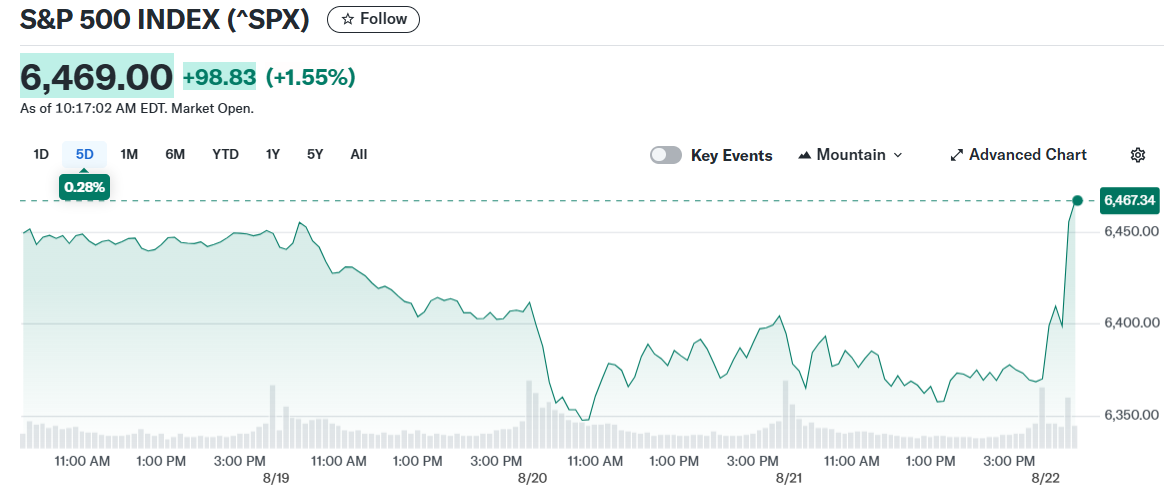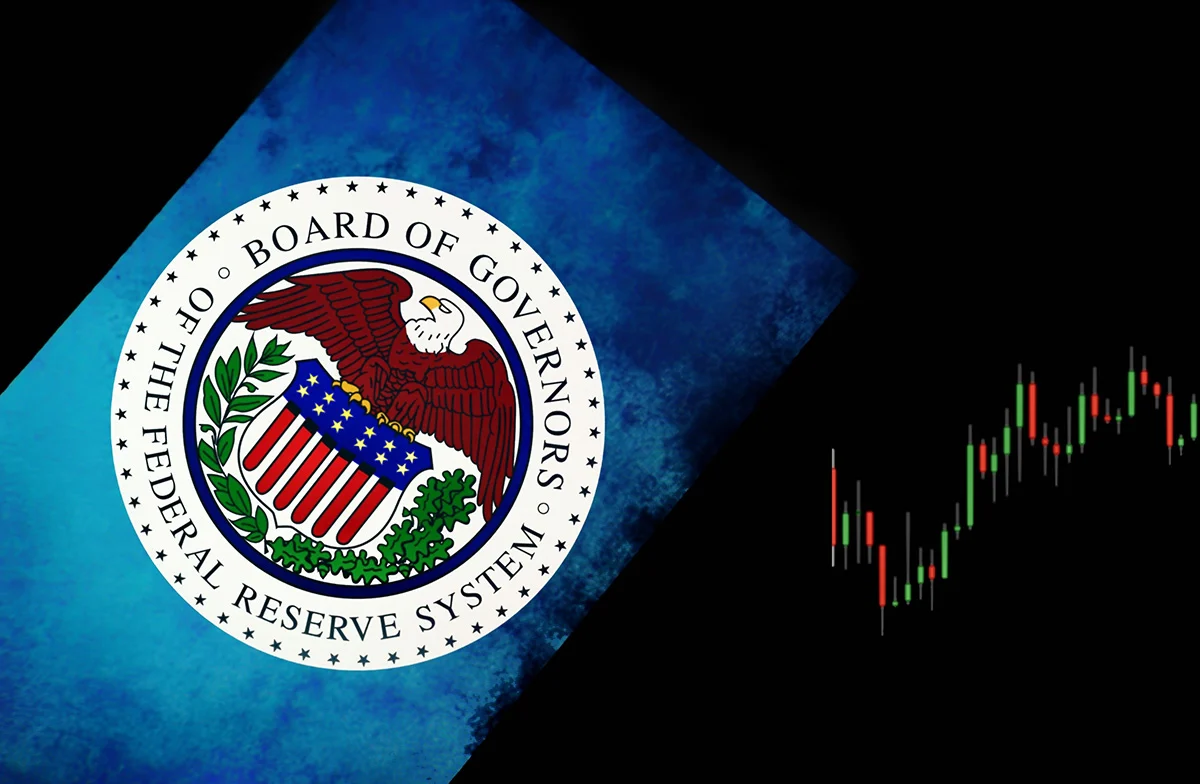TLDR
- Powell said Fed may adjust policy stance, opening door to September rate cut with 90%+ market odds
- Inflation risks remain “tilted to the upside” due to visible tariff-related price pressures
- Labor market shows unusual balance with slowing job growth averaging just 35,000 over three months
- Fed adopts new 2% inflation target framework, moving away from averaging approach
- Powell stressed Fed decisions remain data-driven despite Trump administration pressure for cuts
Federal Reserve Chair Jerome Powell delivered a carefully balanced message at the Jackson Hole Economic Symposium on Friday, suggesting interest rate cuts could be coming while warning about persistent inflation risks. His comments sent stocks soaring and pushed market expectations for a September rate cut above 90%.
Powell acknowledged that current monetary policy may be too restrictive for economic conditions. He stated that “the baseline outlook and the shifting balance of risks may warrant adjusting our policy stance.” The Fed has kept rates unchanged in a range of 4.25%-4.50% since July.
The Fed chair painted a complex economic picture with competing pressures. He described risks as “tilted to the upside” for inflation and “to the downside” for employment, creating what he called “a challenging situation.” This combination raises concerns about potential stagflation.
Tariff-related inflation has become a key concern for policymakers. Powell noted these price pressures “are now clearly visible” and are expected to build over coming months. He emphasized the Fed “will not allow a one-time increase in the price level to become an ongoing inflation problem.”
The labor market has shown troubling signs of weakening in recent months. July’s jobs report revealed only 73,000 new positions, while revisions removed 250,000 jobs from previous reports. Job growth has averaged just 35,000 over the past three months.
Powell described the employment situation as creating “a curious kind of balance” from slowing demand and supply of workers. He warned that “downside risks to employment are rising” and could materialize quickly through higher layoffs and unemployment.
Fed Framework Changes
The central bank also announced changes to its policy framework during Powell’s speech. The Fed will now target 2% inflation directly rather than seeking to average 2% over time. This marks a shift from the 2020 framework adopted during the pandemic.
Powell admitted the previous averaging approach had proven ineffective. He said “the idea of an intentional, moderate inflation overshoot had proved irrelevant” given the high inflation that emerged after 2020. The new language reaffirms the Fed’s commitment to 2% inflation as consistent with its dual mandate.
Political Pressure
Powell also addressed political pressure from the Trump administration, which has criticized the Fed for maintaining higher rates. President Trump removed the head of the Bureau of Labor Statistics following July’s weak jobs data. Powell stressed that Fed decisions remain “based solely on their assessment of the data” and officials “will never deviate from that approach.”
The Fed chair emphasized that “monetary policy is not on a preset course” as officials weigh competing economic risks. Mixed views among Fed officials reflect the challenging environment, with some governors supporting cuts while regional presidents express concerns about inflation.

Markets reacted positively to Powell’s comments, interpreting them as a clear signal that rate cuts are likely in September. CME Group data showed odds for a September cut jumping above 90% immediately after the speech.


